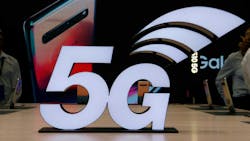5G Hype vs. Reality: Key Insights to Help Optimize 6G’s Launch
What you’ll learn:
- The circumstances around 5G’s failure to launch.
- When to expect it to deliver on its promise.
- What needs to be done to overcome its deployment issues.
It’s been a while since I posted any analyst columns or op-eds on 5G. Now that 5G has matured and all of the fluff is gone, I think the time has come for a real assessment of why 5G didn’t seem to gain real traction early on. I hope that the industry will learn, finally, and not make the same mistake with 6G.
I’m usually the last person to say “I told ya so.” While it’s generally considered more mature and humbler to refrain from saying that, there are certainly moments when it feels warranted to acknowledge that one’s insights are correct. Since I’ve been doing this for nearly three decades, if I can’t get it right by now, I need to hang up my keyboard.
Generally, each failure piece has a slightly different assessment of why, but if they come from knowledgeable sources (not PC Rag), they all give similar reasons. And frankly, I’m a bit surprised that it’s still being discussed.
Some of us saw this coming. The failure of 5G to launch the way it was hyped was as predictable as the tides. As far back as the initial noise of 5G was being heard (I’m going to call it 2015 with 2017 actually making it live, when it was first talked about, and next, when carriers started trialing fixed wireless 5G services as a replacement for wired broadband homes).
It wasn’t until 2019 that 5G started to get traction. At about the same time, I started writing and speaking about it. I took the position that speed and all of the other slick advances would mean nothing to the end user without a real uptick in applications' new and existing performance to ride on it.
I recall having many conversations and sitting on panels at conferences about this issue. Every time I broached the subject of monetization with industry pundits, most came back to me with the end user would be wowed by its speed and performance, and that would make it irresistible. And it’s not like I’m a Mensa member or the only one taking this viewpoint. A few other brave souls were willing to go there as well, but we were few and far in between.
Here Comes the Tsunami: 5G Hype and Initial Failures
As the decade ticked up to the 2020s, the hype momentum was like a storm surge. Get on the wave or get run over—the world was going to be in awe of 5G technology, speed, bandwidth, latency, etc. Well, here we are five years later, and 5G is a flop.
I can’t really blame the players, though. That was the way it had gone with 3G and 4G. However, both 3G and 4G had something to offer other than technology. 3G added better data metrics, video calling, and mobile internet features. 4G added gaming services, HD mobile TV, video conferencing, 3D TV, and other high-bandwidth features.
These came along because its technology bumped up speed and bandwidth. These services made sense to the end user because they offered something new, not because it was faster. Most end users never have cared, and never will care, about raw speed or bandwidth, whatever you want to call it. 3G and 4G had verticals that the end user could lay their hands on. And that makes it monetizable.
One other variable also made 3G and 4G successful. That was the evolution of mobile communications itself. Everyone wanted a mobile phone. And the costs were coming into the range of the average consumer (especially with all of the discount programs offered by the carriers). So, when early pseudo 5G came out, its performance didn’t really improve much over 4G. And there was plenty of publicity about that.
The service providers were dumbfounded. They were of the mindset if we build it, they will come, thinking early 5G will start a landslide of customers rushing to adopt it. That didn’t happen.
Now, as 5G matures, it’s starting to live up to some of its claims. However, it has yet to add anything nearly as valuable as 3G and 4G did. And 5G still suffers from the image of early performance anxiety.
As the years have gone by, the 5G bullet train became a slug. There were lots of backroom meetings on how the heck to get 5G traction. But no matter how they spun it, it needed apps. And we’re still looking for that elusive “killer” app that everybody was waiting for.
In fact, we’re also still waiting for the marked improvements in existing apps that the end user could see and find enough value in to shell out the dollars. On top of that, only very recently have we begun to deploy real 5G (5G SA).
After the 5G Hype: Challenges and Realities
I don’t believe much of the industry understood what the early hype would end up doing to 5G since 3G and 4G were so successful. With the horse out of the barn and no real options, the infrastructure guys bit the bullet, went crying to the government for money, and started funding the deployment, whatever the cost was, hoping to recapture the costs once it was deployed. Then they had to figure out what apps and verticals the end user would determine as worth paying for (never mind that most wireless providers still have no real clue as to how to monetize it once they deploy it).
In the wake of this disaster, some of the damage control was to rush out a few new apps and improve some existing ones (video download was a big one). But they were coupled together using tape and glue. And without 5G SA, they continued to run on hybrid systems that piggyback off 4G LTE.
Trying to salvage some dignity, certain players started to slap labels on the hybrid systems; 5.5G, 5GE, or advanced (not the advanced stipulated in 3GPP rel. 18) were the main attempts. However, under the covers, it’s still hybrid 4G. And there was quite a bit of grandiloquence over early 5G claims. On top of that, advanced iterations of 4G were still doing the job (a story for another time).
The Next Chapter: 5G Progress and Emerging Verticals
Ok, I think we get the picture. It’s 2024, and 5G is still struggling. Some progress has been made, especially in Asian markets with SA, but killer apps and halfway ubiquitous deployment remain lacking.
However, some verticals do show promise. Top among them is gaming and virtual everything, aka metaverse (which, BTW, is also sputtering due to the hype). Other potential markets include fleet management, healthcare, manufacturing (looking hard at private 5G), fixed wireless (FWA) as competition against fiber to the premise, and real-time multimedia streaming. Each is in a different stage of gaining traction, some further along than others.
Of course, many other verticals wait in the wings or targeting narrower markets. However, all of this can’t be fully deployed until widespread 5G exits.
Do we have 5G? Unequivocally, yes. But not in the way it was hyped at its inception—the dust has settled. Everyone gets it that the only way 5G is going to monetize is with verticals.
What’s It Going to Take? Requirements for Successful 5G Deployment
Foremost, get the network out—whatever it takes. That “whatever” is the same old notion as everything else: time and money. Most countries have realized that they need to throw government money at it to kick-start it.
Many countries are subsidizing 5G deployments. Those in Europe and the Middle East, Japan, and South Korea are the most visible, but the list keeps getting longer. The U.S. tends to take the view that 5G deployment should be done by the carriers and infrastructure segments and not the government.
I agree, but at the same time, there’s the specter that without government funding, we will fall behind in both deployment and technology. I don’t believe that to be true. It will just take longer without government help and incentives.
However, the U.S. is throwing something at it. Help is coming in the way of the Wireless Innovation Fund and the Rural 5G Fund. It’s not much, but it's better than nothing. Also, the government is moving along with reworking the spectrum, so more becomes available and deployment is easier.
And, of course, let’s not forget our split with China. It would have been so much nicer and easier if both East and West were on the same page and developed 5G as partners. However, as it stands now, 5G will deploy as a fragmented global ecosystem. How globally seamless it will be is yet to be determined.
So, with all that being said, the deployment of 5G is going to take as long as it is going to take, especially with the shifting global ecosystem. Continuing to discuss the failure of 5G is simply academic.
The future of 5G is no longer hiding in a crystal ball. The solution is to get the network deployed with SA and start building apps that the end user finds attractive.
Looming Challenges with 6G
6G will present us with a much different set of challenges.
First off, I’m with the camp that wants to do away with the linear naming convention we currently use. Therefore, I’m not in favor of continuing the count of G’s. My reasoning is that the next iteration of the network will not follow the concept of what we’ve been using up until now.
Our existing networks, for the most part, are a host-client scheme. The setup is that all clients communicate through the host (the tower).
Now, before readers come gunning for me by presenting exceptions to this, I understand that there are exceptions to everything. But my perspective is more high-level and not intended to get into the weeds on types of networks. If we don’t deviate too far from the “cellular” concept, this statement is true.
So, the next iteration of global wireless communications will have a completely different interface methodology. The fact that much of the communication will be via mmWave frequencies throws long-distance point-to-point (P2P) (tower-to-mobile) out the window, for the most part.
Instead of one-to-many, it will be many-to-many. There will be no centralized host. In short, every device will be both a client and a host.
And with that statement, I will conclude this missive. As is often said, “I’ll be baack” to finish the 6G discussion shortly.
About the Author

Ernest Worthman
Principal, Worthman & Associates
Ernest Worthman is the principal of Worthman & Associates, a high-tech industry analyst and an editorial columnist for a number of media outlets such as Endeavor Business Media’s Electronic Design and Informa’s 6G World. He is a nationally and internationally published technical editor/writer for wireless, semiconductor, cybersecurity, and other industries, and regularly speaks at industry events. He is a guest lecturer at Colorado State University’s College of Electrical Engineering.
Ernest’s present credentials include a B.S. Electronic Engineering Technology, A.A.S, Electronic Digital Technology; Senior and Life Member of the IEEE, a member of IEEE’s ComSoc, VTS, MTT, and 5G community, board member of the 6G Alliance, and a Panelist and session chair at various technical conferences.
Ernest has over 25 years of experience in high-tech print and online publishing. He’s held several editorial positions across a number of high-tech publications including Semiconductor Engineering’s cybersecurity and Internet of Everything/Everyone (IoX) channels, Editor of RF Design, and Editorial Director of Reed’s Wireless group, which included Wireless Design and Development and Fiber Optic Technology. He’s also been a contributing editor to Mobile Radio Technology, Satellite Communications, and others, as well as computer-related periodicals such as Windows NT.
His clients include Agilent (now Keysight) Technologies, RF Industries, GlobalFoundries, Advanced Linear Devices, Huawei, and others, for which he does technical and engineering writing and presents technical seminars.


